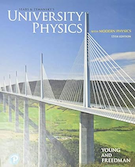Energy, Work, and Power
This page provides the chapter on energy, work, and power from the "DOE Fundamentals Handbook: Classical Physics," DOE-HDBK-1010-92, U.S. Department of Energy, June 1992.
Other related chapters from the "DOE Fundamentals Handbook: Classical Physics" can be seen to the right.
- Unit Systems
- Vectors
- Force and Motion
- Application of Newton's Laws
- Energy, Work, and Power
Energy and Work
Energy is the measure of the ability to do work or cause a change. Work is a measure of the amount of energy required to move an object.
Energy
Energy is defined as the measure of the ability to do work. Energy determines the capacity of a system to perform work and may be stored in various forms. Some of the more basic mechanical systems involve the concepts of potential and kinetic energy. Both of these terms will be explained more fully later in this chapter. More advanced systems may include other types of energy such as chemical, electromagnetic, thermal, acoustic, and nuclear. A piledriver hammer performs work by virtue of its falling motion. Coal burned in a fossil-fueled power plant is undergoing energy release by a chemical reaction. Fuel elements in a nuclear power reactor produce energy by a nuclear reaction. For the purposes of this course, our discussions will be limited to mechanical and thermal forms of energy (e.g., heat). It should be noted, however, that the principles involved with energy calculations are similar for all types of energy.
Both thermal and mechanical energy can be separated into two categories, transient and stored. Transient energy is energy in motion, that is, energy being transferred from one place to another. Stored energy is the energy contained within a substance or object. Both of these categories of energy will be discussed in this module.
Potential Energy
Potential energy is defined as the energy stored in an object because of its position. An example is the potential energy of an object above the surface of the earth in the earth's gravitational field. Potential energy also applies to energy due to separation of electrical charge and to energy stored in a spring, in other words, energy due to position of any force field.
As an example, consider the energy stored in hydrogen and oxygen as potential energy to be released on burning. Burning changes their relative separation distance from the elemental form to the compound form as water releases the potential energy.
When discussing mechanical potential energy, we look at the position of an object. The measure of an object's position is its vertical distance above a reference point. The reference point is normally the earth's surface, but can it be any point. The potential energy of the object represents the work required to elevate the object to that position from the reference point. Potential energy is mathematically represented by Equation 5-1.
| PE = work to elevate = weight × height = | $$ {mgz \over g_c} $$ |
where:
| PE | = | potential energy in ft-lbf |
| m | = | mass in lbm |
| g | = | 32.17 ft/sec2 |
| gc | = | 32.17 (lbm-ft)/(lbf-sec2) |
| z | = | height above a reference in ft |
It should be noted the gc is used only when using the English system of measurement.
| Example: | What is the potential energy of a 50 lbm object suspended 10 feet above the ground? |
|
$$ PE = {mgz \over g_c} = \left({ 50 ~\text{lbm} \over 1 }\right) \left({ 32.17 ~\text{ft} \over \text{sec}^2 }\right) \left({ 10 ~\text{ft} \over 1 }\right) \left({ \text{lbf-sec}^2 \over 32.17 ~\text{lbm-ft} }\right) $$
|
|
| Answer: | PE = 500 ft-lbf |
Kinetic Energy
Kinetic energy is defined as the energy stored in an object because of its motion. If you have a baseball in your hand, it has no kinetic energy because it is not moving. But if you throw the ball, your hand has provided energy to give the ball motion. When you release the ball, it leaves your hand at some velocity. The energy you have given the ball will determine the velocity of the ball. Because the kinetic energy is due to the motion of the object, and motion is measured by velocity, kinetic energy can be calculated in terms of its velocity, as shown below.
where:
| KE | = | kinetic energy in ft-lbf |
| m | = | mass in lbm |
| v | = | velocity in ft/sec |
| gc | = | (32.17 lbm-ft)/(lbf-sec2) |
| Example: | What is the kinetic energy of a 10 lbm object that has a velocity of 8 ft/sec? |
|
$$ KE = {mv^2 \over 2 g_c} = \left({ 10 ~\text{lbm} \over 2 }\right) \left({8 ~\text{ft} \over \text{sec}}\right)^2 \left({ \text{lbf-sec}^2 \over 32.17 ~\text{lbm-ft} }\right) $$
|
|
| $$ KE = (5 ~\text{lbm}) \left({64 ~\text{ft}^2 \over \text{sec}^2}\right) \left({ \text{lbf-sec}^2 \over 32.17 ~\text{lbm-ft} }\right) $$ | |
| Answer: | KE = 9.95 ft-lbf |
The kinetic energy of an object represents the amount of energy required to increase the velocity of the object from rest (v = 0) to its final velocity, or the work it can do as it pushes against something in slowing down (waterwheel or turbine, for example.)
Thermal Energy
Thermal energy is that energy related to temperature (the higher the temperature, the greater the molecular movement, and the greater the energy). If one object has more thermal energy than an adjacent substance, the substance at the higher temperature will transfer thermal energy (at a molecular level) to the other substance. Note that the energy is moving from one place to another (it is in motion) and is referred to as transient energy or, more commonly in the case of thermal energy, heat.
The only stored energy in a solid material is internal energy. Internal energy is the energy stored in a substance because of the motion and position of the particles of the substance. Heat and internal energy will be covered in the Fundamentals Manual on Heat Transfer, Fluid Flow, and Thermodynamics.
Mechanical Energy
Mechanical energy is energy related to motion or position. Transient mechanical energy is commonly referred to as work. Stored mechanical energy exists in one of two forms: kinetic or potential. Kinetic and potential energy can be found in both fluids and solid objects.
Work
Work is commonly thought of as any activity requiring exertion. However, the definition in physics is much more specific. Work is done by a force acting on a moving object if the object has some component of motion in the direction of the force. Work can be done BY a person, a machine, or an object by applying a force and causing something to move. More specifically, work is done by a force acting on a moving object if the object has some component of motion in the direction of the force. Work can be done ON an object by applying a force that causes it to move. For example, if you push on a box (apply a force) and it moves three feet, work has been performed BY you to the box, while work has been performed ON the box. If you push on the box and it does not move, then work, by our definition, has not been accomplished. Work can be defined mathematically by Equation 5-3.
where:
| W | = | work done in ft-lbf |
| F | = | force applied to the object in lbf |
| d | = | distance the object is moved (in ft.) with the force applied |
Example:
You push a large box for three minutes. During that time, you exert a constant force of 200 lbf to the box, but it does not move. How much work has been accomplished?
W = F × d
W = 200 lbf × 0 ft
W = 0 ft-lbf work done
Remember that if no movement is achieved, no work has been accomplished. Even if you feel fatigued, no work has been done. Work can be thought of as what has been accomplished. If nothing is accomplished, then no work has been done.
Example:
You push the same box as mentioned above. You apply a horizontal force of 200 lbf to the box, and the box moves five feet horizontally. How much work have you done?
W = F × d
W = 200 lbf × 5 ft
W = 1000 ft-lbf work done
In this case, work can be described as work done by the person pushing the box or work performed on the box. In either case, the amount of work is the same.
We have a number of structural calculators to choose from. Here are just a few:
Law of Conservation of Energy
Energy does not simply appear and disappear. Energy is transferred from one position to another or transformed from one type of energy to another.
Conservation of Energy
The First Law of Thermodynamics is simply stated "energy cannot be created or destroyed, only altered in form." In the previous chapter, we discussed potential energy, where a force is applied to an object, raising it from some point of origin to some height. The energy expended in raising the object is equivalent to the potential energy gained by the object because of its height. This is an example of a transfer of energy as well as an alteration of the type of energy. Another example is throwing a baseball. While the ball is in your hand, it contains no kinetic energy. You apply a force to the ball by throwing it. The ball leaves your hand with a velocity, giving it kinetic energy equal to the work applied by your hand. Mathematically, this can be described by the following simplified equation.
where:
Energyinitial is energy initially stored in an object/substance. This energy can exist in various combinations of kinetic energy and potential energy.
Energyadded is energy added to the object/substance. Heat can be added. Energy can be added in the form of stored energy in any mass added, such as water to a fluid system. Work can be done on a system. Heat is energy gained or lost at a microscopic level. Work is the same at a macroscopic level.
Energyremoved is energy removed from an object/substance. Heat can be rejected. Work can be done by the system. This energy can be in the form of energy stored in any mass removed.
Energyfinal is energy remaining within the object/substance after all energy transfers and transformations occur. This energy can exist in various combinations of kinetic, potential, flow, and internal energy.
To further describe each of the components of the above equation, each component can be broken down as follows:
| Energyinitial | = | KE1 + PE1 |
| Energyadded | = | Work done on and heat added to the system |
| Energyremoved | = | Work done by and heat removed from the system |
| Energyfinal | = | KE2 + PE2 |
The resulting energy balance is provided in Equation 5-5.
Neglecting any heat removed or added to a system, we can replace Eadded and Eremoved in Equation 5-5 with their associated work terms to obtain Equation 5-6.
The final energy balance is called a "simplified energy balance." Any energy balance is a statement of the Law of Conservation of Energy. In this simplified form, the balance applies only to mechanical problems, since we neglected heat. However, more specific energy balances that include heat will be discussed in other Fundamental Manuals. For example, specific energy balances for flow systems will be discussed in the Heat Transfer, Fluid Flow, and Thermodynamics modules.
We have a number of structural calculators to choose from. Here are just a few:
Power
Power is a measure of the rate at which energy is used. Thermal power is the term used to refer to the transfer of heat. Mechanical power is the term used to describe when work is being done.
Power
Power is defined as the amount of energy used per unit time or rate of doing work. It has the units of watt, Btu, horsepower, or ft-lbf/sec.
Thermal Power
Thermal power is the measure of thermal energy used per unit time. It is the rate of heat transfer or heat flow rate. Examples of thermal power units are British Thermal Units (Btu) or kilowatts (kW). Thermal power is calculated basically by the mathematical expression of:
$$ \text{Thermal Power} = { \text{heat used} \over \text{time required} } $$Thermal energy and calculations of thermal power will be covered in more detail in the Fundamentals Manual for Heat Transfer, Fluid Flow, and Thermodynamics.
Mechanical Power
Mechanical energy used per unit time is called mechanical power. Mechanical power is the rate at which work is done. Mechanical power is expressed in units of joules/sec (joules/s) or a watt (W) in the mks system, and feet - pounds force per second (ft-lbf/s) or horsepower (hp) in the English system. Mechanical power can be calculated using the following mathematical expression.
$$ \text{Power} = { \text{work done} \over \text{time required} } $$Because work can be defined as force times distance, we can also use the following equation:
where:
| P | = | Power (W or ft-lbf/s) |
| F | = | Force (N or lbf) |
| d | = | distance (m or ft) |
| t | = | time (sec) |
One horsepower is equivalent to 550 ft-lbf/s and 745.7 watts. Because in the equation above d divided by t is the same as velocity, an alternate description of power is as follows.
where:
| P | = | power (hp) |
| F | = | force (lbf) |
| v | = | velocity (ft/s) |
When using equations 5-6 or 5-7, you must either assume force and velocity are constant or that average values of the force and velocity are used.
Example 1:
A pump provides a flow rate of 10,000 gpm. The pump does 1.5 × 108 ft-lbf of work every 100 minutes. What is the power of the pump in hp?
$$ \text{Power} = { \text{work done} \over \text{time required} } $$ $$ P = \left({ 1.5 \times 10^8 ~\text{ft-lbf} \over 100 ~\text{min}}\right) \left({1 ~\text{min} \over 60 ~\text{sec}}\right) \left({ 1 ~\text{hp} \over 550 ~\text{ft-lbf/sec} }\right) $$ P = 45.5 hpExample 2:
A boy rolls a ball with a steady force of 1 lbf, giving the ball a constant velocity of 5 ft/s. What is the power used by the boy in rolling the ball?
$$ P = { F v \over 550 } $$ $$ P = { (1 ~\text{lbf})(5 ~\text{ft/sec}) \over 550 } $$ P = 9 × 10-3 hpExample 3:
A race car traveling at constant velocity can go one quarter mile (1455 ft) in 5 seconds. If the motor is generating a force of 1890 lbf pushing the car, what is the power of the motor in hp? Assume the car is already at full speed at t = 0.
$$ P = {F d \over t} $$ $$ P = \left[{ (1890 ~\text{lbf})(1455 ~\text{ft}) \over 5 ~\text{sec}}\right] \left[{ 1 ~\text{hp} \over 550 ~\text{ft-lbf/sec} }\right] $$P = 1000 hp
or
$$ P = { F v \over 550 } $$ $$ P = { (1890 ~\text{lbf})(291 ~\text{ft/sec}) \over 550 } $$ P = 1000 hpPDH Classroom offers a continuing education course based on this energy, work, and power reference page. This course can be used to fulfill PDH credit requirements for maintaining your PE license.
Now that you've read this reference page, earn credit for it!





